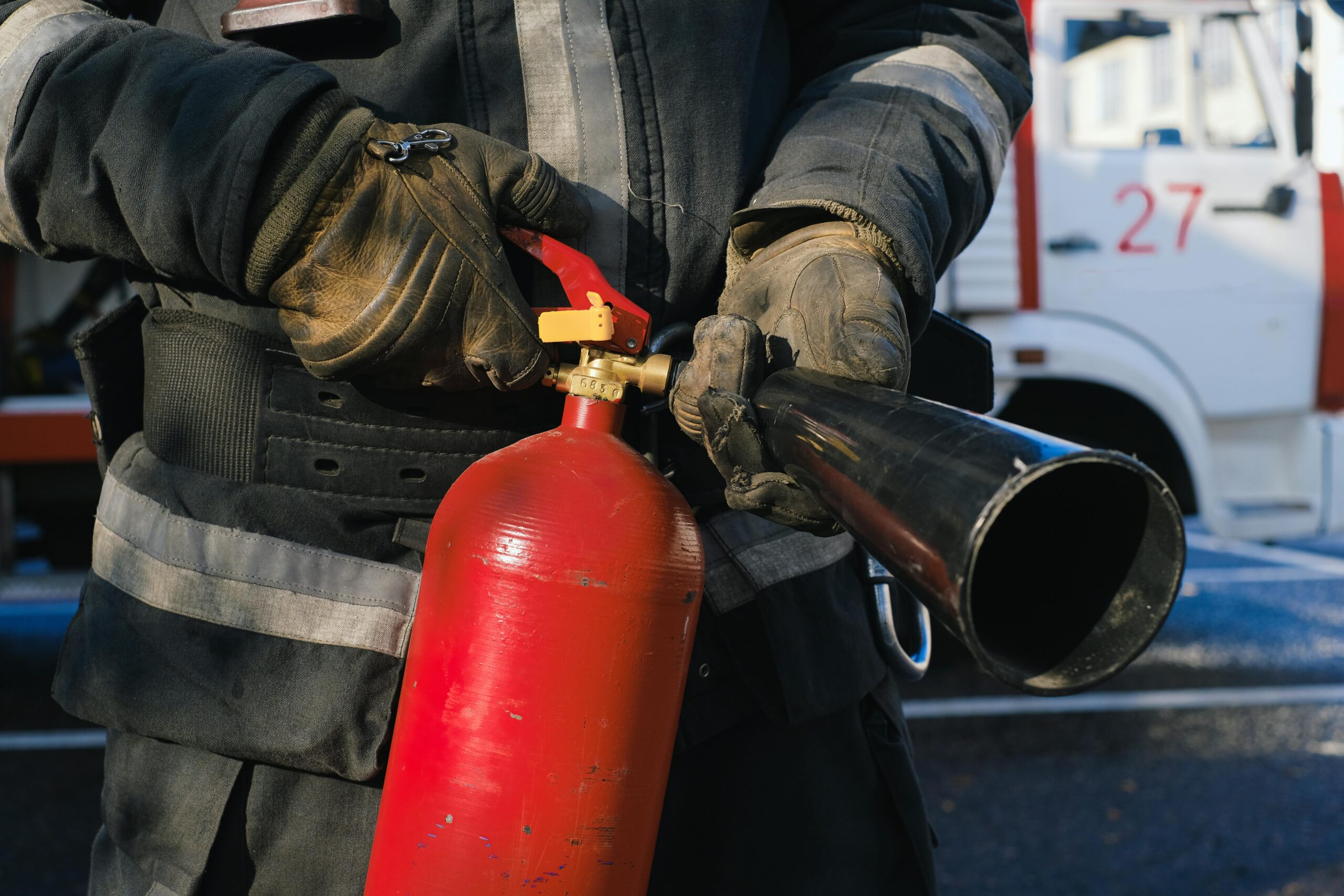Informational
Addressing Serious Occupational Health Threats in the Firefighting Profession

Firefighting is a noble and demanding profession that requires immense courage and skill. However, it poses serious occupational health threats often overlooked. Firefighters face numerous hazards, including exposure to toxic chemicals, respiratory issues, musculoskeletal injuries, cardiovascular problems, mental health challenges, and hearing loss.
These risks endanger their physical well-being and can impact their mental health and overall quality of life. In this article, we’ll discuss key health threats faced by firefighters and effective strategies for prevention, ensuring proper care and support.
1. Exposure to Toxic Chemicals
Firefighters often face exposure to toxic chemicals, especially through Aqueous Film-Forming Foam (AFFF), a firefighting agent used for flammable liquid fires. AFFF contains per- and polyfluoroalkyl substances (PFAS), which are linked to serious health risks, including cancer.
Recently, the AFFF foam lawsuit has targeted manufacturers for failing to warn about these hazards. To reduce exposure, firefighters should use safer alternatives and follow decontamination procedures to minimize chemical absorption. Raising awareness about AFFF’s dangers is crucial for safeguarding firefighter health and ensuring long-term well-being.
According to TorHoerman Law, consulting an AFFF attorney experienced in toxic torts is vital for those affected. Law firms can expertly navigate the legal process, building strong cases related to cancer diagnoses for affected families.
How can firefighters protect themselves from chemical exposure during operations?
Firefighters can reduce chemical exposure by wearing protective gear like gloves, masks, and specialized suits to block harmful substances. Decontaminating gear after each operation is essential to eliminate hazardous residues.
2. Respiratory Issues
Research from the Wiley Online Library shows that a large number of firefighters in the US report respiratory illnesses each year. Specifically, World Trade Center-exposed firefighters exhibited odds of obstructive airway diseases (OAD) 4.5 times higher than non-exposed firefighters. This highlights the severe impact of environmental exposures on respiratory health.
Smoke, toxic gasses, and particulate matter during firefighting can cause chronic respiratory diseases, including asthma and chronic obstructive pulmonary disease (COPD). To minimize these risks, firefighters must utilize proper respiratory protection, such as N95 masks or SCBAs, while on the scene.
Health screenings detect early respiratory issues while training on ventilation and incident scene management reduces harmful airborne exposure.
What equipment can help mitigate respiratory risks for firefighters?
To minimize respiratory risks, firefighters should wear self-contained breathing apparatus (SCBA) or N95 masks in hazardous environments. SCBAs provide a reliable supply of clean air, protecting against harmful particles. Powered air-purifying respirators (PAPRs) can offer enhanced protection, particularly during prolonged operations.
3. Musculoskeletal Injuries
Musculoskeletal injuries are prevalent in firefighting, primarily due to the physically demanding nature of the job. Firefighters often lift heavy equipment, climb ladders, and navigate challenging environments, increasing their risk of strains, sprains, and other injuries.
The Open Public Health Journal reports older, experienced firefighters face more injuries, with falls and slips frequently causing harm. Preventing injuries requires emphasizing proper body mechanics and techniques during training, especially given the link between MSD and MSIs.
Incorporating strengthening exercises, stretching routines, and ergonomic practices can enhance flexibility and resilience. Moreover, using appropriate lifting techniques and equipment, such as hydraulic tools, reduces physical strain during operations.
4. Cardiovascular Problems
The intense physical exertion and high-stress situations inherent in firefighting can elevate the risk of heart attacks, hypertension, and other cardiovascular diseases. Regular physical fitness training is essential for maintaining cardiovascular health, emphasizing endurance, strength, and flexibility.
Firefighters should also monitor their blood pressure and cholesterol levels as part of routine health assessments. Nutrition plays a critical role; maintaining a balanced diet supports overall heart health.
5. Mental Health Challenges
Firefighters often experience stress, anxiety, depression, and post-traumatic stress disorder (PTSD) due to their work. Creating a supportive environment for firefighters to discuss their feelings and experiences is essential.
Implementing peer support programs and providing access to mental health resources offer critical assistance. Regular mental health training can help firefighters recognize signs of distress in themselves and others, fostering a culture of care and understanding.
What signs indicate that a firefighter may be struggling with mental health issues?
Mental health warning signs in firefighters include persistent sleep issues, substance abuse, PTSD, chronic pain, and trouble adjusting to home life. Additional indicators are memory and concentration challenges, strained family relationships, and a constant state of high alertness. Recognizing these signs can help in seeking timely support and appropriate care.
6. Hearing Loss
Hearing loss is a significant yet often overlooked hazard in firefighting. Exposure to loud noises from alarms, sirens, and equipment can cause irreversible damage over time.
NCBI states around 30% of firefighters experience mild to profound hearing loss by retirement, a rate significantly higher than normal aging alone. Despite the risks, 74% of firefighters initially expressed little concern about hearing loss, though 82% later reported future worries.
To mitigate this risk, firefighters should wear hearing protection, such as earplugs or earmuffs, during operations where noise levels exceed safe thresholds. Regular hearing assessments can help monitor any changes in auditory function. Moreover, training on noise exposure awareness promotes proactive measures to protect hearing health.
Advocating for Firefighter Health Standards
Addressing the serious occupational health threats in firefighting is crucial for protecting those who bravely serve our communities. Advocating for awareness about chemical exposure, respiratory risks, musculoskeletal injuries, mental health, and hearing loss improves prevention efforts. Empowering firefighters with proper training, resources, and healthcare access significantly enhances their safety and well-being.
Keep an eye for more latest news & updates on Tech Ranker!











